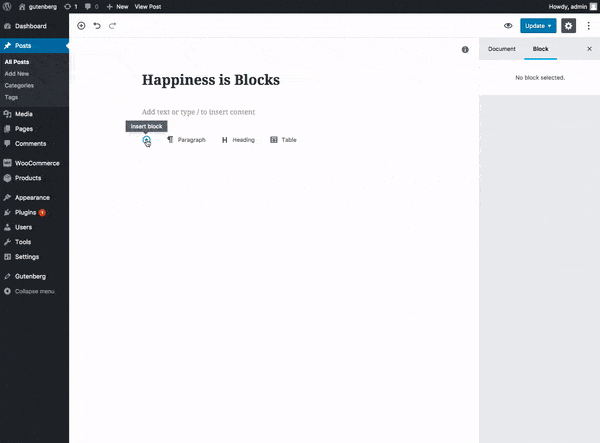WordPress has been the go-to Content Management System (CMS) for years. With the constant changes to web development, however, can the future hold a major overhaul in the approach to web content creation and management? After all, we’ve seen popular technologies, like flash animations, die out and get replaced with new ones.
WordPress (WP) is currently by far the most dominant software for web content management. Over 27% of the modern web runs on WordPress. Take that for data!
Fancy some more numbers? WP has over 60% of the CMS market share (more than its main competitors, Joomla and Drupal, combined). All pages built with WordPress get a staggering 175 million views per month. Moreover, 40% of all online stores are powered by WooCommerce, WP’s add-on for e-commerce.
All pages built with WordPress get a staggering 175 million views per month
Why is WordPress so big? Because it can suit your needs no matter what they are. WP powers high-traffic e-commerce sites, pages of large enterprises and blogs of both influencers and blogger-wannabes.
They all use this software as it is very intuitive and simple to use, especially for adding new content. In most cases, it doesn’t even require creators to know the basics of HTML. WordPress made publishing content online a piece of cakethat anyone with rudimentary computer skills is capable of.
But WordPress doesn’t only make things easy for content creators and managers. It’s an easy way to set up a website from scratch.
Once you get a domain and hosting, you simply download and install WP. It can be done directly from your hosting management dashboard.
Then you have to select a theme for your WordPress, either a free one or a paid one. After installing a theme in WP, customize it to your needs and start creating unique content. It’s as simple as that.
Of course, setting up WordPress so it fulfills all your needs requires both time and knowledge of the software. There are millions of themes and plugins that make WP customizable. Each of them can have its own set of settings. You can always hire an interactive agency to set everything up for you. It won’t cost you much and will save you tons of time. Once set up, you are able to add, edit and manage content easily.
WordPress templates are an easy and quick fix.
However, if you need an original product and a highly customizable web presence, you will be better off with a custom website that uses WordPress as an engine.
We have a vast portfolio of such projects, including one we delivered for Aon, one of the largest enterprises in the world.
Do not hesitate to reach out if you need guidance when it comes to web development.
The Ongoing Evolution of WordPress
WordPress was first launched in 2003 and has been undergoing constant developments ever since. Let’s see what its history tells us.
The first public version, the 0.7, as you can imagine was extremely basic. It wasn’t until the 1.0 version that users could even use permalinks, categorization or moderate comments.
Plugins(!), post previews and subcategories were introduced soon after, but we had to wait until 2005 and WordPress 1.5 to see themes that could differentiate WP sites.
Other today-essential tools, like widgets, user roles, autosaving, tags and the ability to switch between visual and text editing were introduced in the following three years.
In December 2008, WordPress’s dashboard finally started to look similar to today’s version. In 2010 developers were able to vastly expand WP’s customization capabilities, thanks to the integration with a few more APIs.
The 3.1 version brought us the familiar admin bar at the top of managed WP pages. In December 2013, WP’s dashboard interface underwent further changes, making it look pretty much the same as we know it today. Later iterations brought upgrades like distraction-free writing, menus edits in customizers, and the possibility to use video headers for websites.


